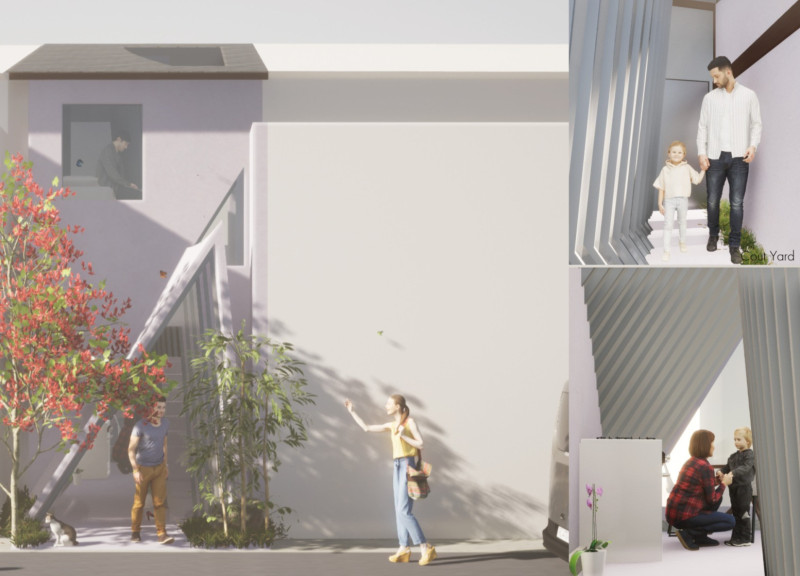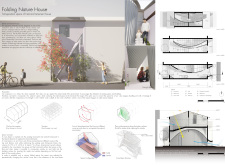5 key facts about this project
The architecture prioritizes connections between indoor and outdoor spaces, allowing natural elements to influence the living environment. The use of curvilinear forms and flexible interior layouts enhances the movement and adaptability of spaces, catering to varying familial needs. The overall aesthetic reflects a thoughtful balance between contemporary design and traditional cultural elements.
Unique Design Principals
The design approach of the Folding Nature House utilizes minimal internal spaces while maximizing outdoor areas. This strategy ensures that residents can seamlessly transition between their living spaces and natural settings. The project incorporates trees and vegetation in the central courtyard, infusing greenery into the daily lives of inhabitants and promoting biodiversity within an urban context. The structural framework consists of cross beams that sustain both the interior and exterior spaces, solidifying the connection to nature while providing structural integrity.
Incorporating sustainable materials, the project features wood for interior elements, concrete for structural support, glass to enhance natural light, and metal for roofing. These materials not only contribute to the durability of the residence but also maintain a cohesive visual language that aligns with the surrounding environment. Lattice screen panels are thoughtfully integrated to manage sunlight while fostering privacy and enhancing airflow.
Architectural Function and Flexibility
The primary function of the Folding Nature House is to offer diverse living spaces that adapt to communal living dynamics. The design encourages interaction among residents while maintaining private areas necessary for individual family units. Each unit is equipped with flexible spaces that can serve various purposes, such as living, working, and recreational areas. These versatile configurations cater to different lifestyles, representing a shift from rigid housing models to more fluid living arrangements.
The architectural sections and plans articulate the innovative partitioning of spaces and the effective use of both horizontal and vertical planes. By encouraging this adaptability, the Folded Nature House sets a precedent for urban residential projects focused on sustainability and community integration.
To understand the scope and details of the Folding Nature House further, readers are encouraged to explore its architectural plans, sections, designs, and ideas in depth. This analysis highlights its unique aspects and serves as a reference for contemporary architectural practices.























